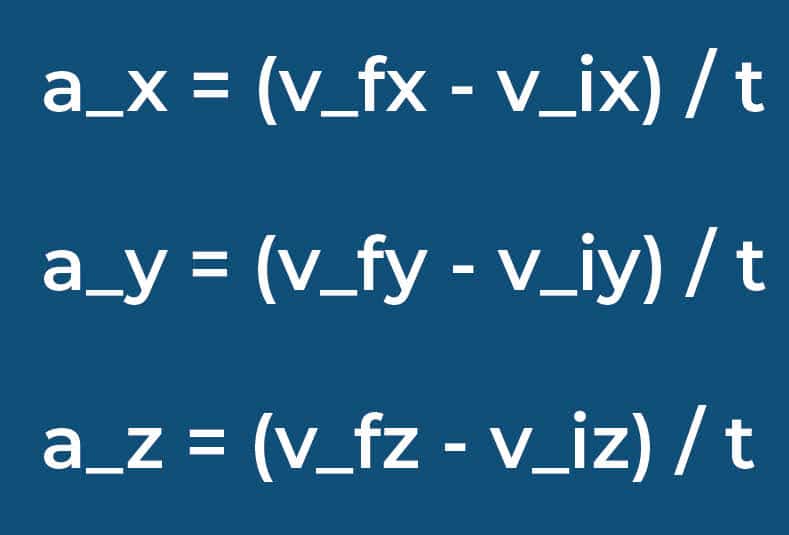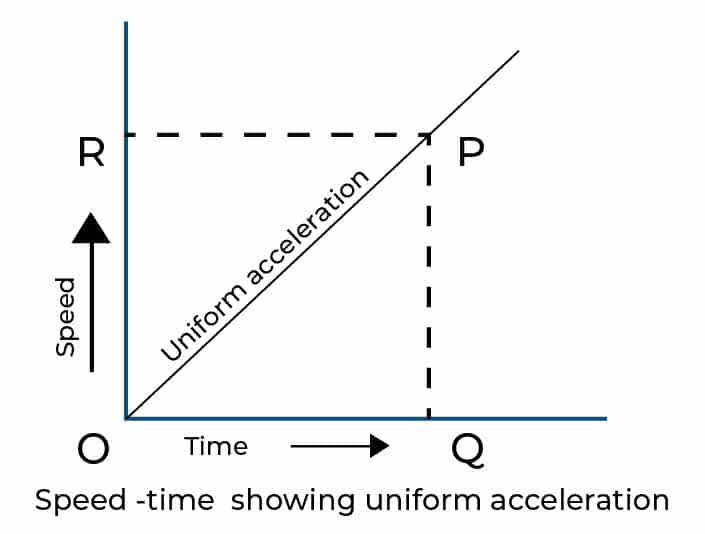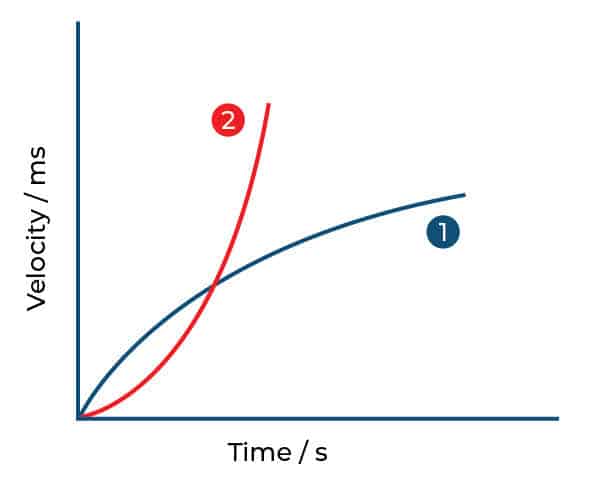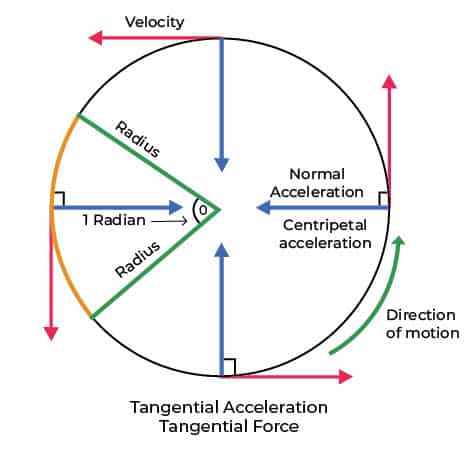What Is Acceleration?
Grade 6 Science Worksheets
Acceleration is the rate of change of velocity of an object with respect to time. In other words, acceleration is the measure of how much an object’s speed changes over a certain period of time.
Table of Contents:
- What is Acceleration?
- Formulae of Acceleration
- Acceleration vs. Speed
- Types of Acceleration
- Factors affecting Acceleration
- FAQs
What Is Acceleration? - Grade 6 Science Worksheet PDF
This is a free printable / downloadable PDF worksheet with practice problems and answers. You can also work on it online.
|
|
Untimed |
|
Sign up with your email ID to access this free worksheet.
"We really love eTutorWorld!"
"We really love etutorworld!. Anand S and Pooja are excellent math teachers and are quick to respond with requests to tutor on any math topic!" - Kieran Y (via TrustSpot.io)
"My daughter gets distracted easily"
"My daughter gets distracted very easily and Ms. Medini and other teachers were patient with her and redirected her back to the courses.
With the help of Etutorworld, my daughter has been now selected in the Gifted and Talented Program for the school district"
- Nivea Sharma (via TrustSpot.io)
What is Acceleration?
Acceleration is the rate of change of velocity of an object with respect to time. In other words, acceleration is the measure of how much an object’s speed changes over a certain period of time.
Acceleration can be described as a vector quantity, which means it has both magnitude and direction. The magnitude of the acceleration is typically measured in meters per second squared (m/s^2), and its direction is usually the same as the direction of the force causing the acceleration.
An object can accelerate in different ways, such as speeding up, slowing down, or changing direction. Acceleration is directly proportional to the net force acting on an object, and inversely proportional to its mass. This means that the greater the net force acting on an object, the greater its acceleration will be, and the greater the mass of the object, the smaller its acceleration will be for a given force.
Formulae of acceleration:
The formula for acceleration is:
acceleration = change in velocity/time taken
In mathematical notation, this can be written as:
where “a” is acceleration, “v_f” is the final velocity of the object, “v_i” is the initial velocity of the object, and “t” is the time interval over which the velocity changes.
It is important to note that acceleration is a vector quantity and has both magnitude and direction.
Therefore, the formula for acceleration can also be written in terms of its components in different directions, as:
where “a_x”, “a_y”, and “a_z” are the components of acceleration in the x, y, and z directions, respectively.
It is also important to note that the unit of acceleration in the International System of Units (SI) is meters per second squared (m/s^2).
Acceleration vs. Speed:
Acceleration and speed are two different concepts in physics.
Speed is the measure of how fast an object is moving, and it is a scalar quantity, which means it only has a magnitude and no direction. The speed of an object is typically measured in units of distance per time, such as meters per second (m/s) or miles per hour (mph).
Acceleration, on the other hand, is the rate at which an object’s velocity (rate of change of an object’s position with respect to time and includes both speed and direction.) changes over time, and it is a vector quantity.
It is the rate of change of speed or direction or both. The units of acceleration are typically meters per second squared (m/s^2) or feet per second squared (ft/s^2).
In other words, acceleration is the change in velocity over time, while speed is just the magnitude of the velocity of an object at a particular moment in time. An object can have a constant speed, but still, experience acceleration if it is changing direction.
To summarize, speed tells you how fast an object is moving, while acceleration tells you how quickly its speed or direction is changing.
“There have been times when we booked them last minute, but the teachers have been extremely well-prepared and the help desk at etutorworld is very prompt.
Our kid is doing much better with a higher score.”
6th Grade Tutoring
eTutorWorld offers Personalized Online Tutoring for Math, Science, English, and Standardised Tests.
Our Tutoring Packs start at just under $22.49 per hour, and come with a moneyback guarantee.
Schedule a FREE Trial Session, and experience quality tutoring for yourself. (No credit card required.)
Types of Acceleration:
There are several types of acceleration, which can be classified based on the cause or nature of the acceleration. Here are some of the most common types of acceleration:
1. Uniform acceleration: This is an acceleration that is constant over time and has a fixed magnitude and direction.
For example, an object falling under the influence of gravity experiences a uniform acceleration of approximately 9.8 m/s^2.
2. Non-uniform acceleration: This is an acceleration that changes over time and/or has a variable magnitude or direction.
For example, a car moving through traffic might experience non-uniform acceleration as it speeds up, slows down, and changes direction.
3. Tangential acceleration: This is an acceleration that occurs in the direction of an object’s velocity. It can occur when an object is speeding up or slowing down while moving in a circular path.
For example, a car moving around a curved road experiences tangential acceleration as it speeds up or slows down while turning.
4. Radial acceleration: This is an acceleration that occurs in a direction perpendicular to an object’s velocity, towards the center of a circular path. It is responsible for the centripetal force that keeps an object moving in a circular path.
For example, a car moving around a curved road experiences radial acceleration that keeps it moving in a circle.
5. Negative acceleration: This is an acceleration that opposes the direction of an object’s motion. It can occur when an object is slowing down or changing direction.
For example, when a car applies its brakes, it experiences negative acceleration.
Factors Affecting Acceleration:
Several factors can affect the acceleration of an object. Here are some of the most important ones:
Net force: The net force acting on an object is directly proportional to its acceleration. If a larger net force is applied to an object, it will experience greater acceleration.
Mass: The mass of an object is inversely proportional to its acceleration. This means that the greater the mass of an object, the smaller its acceleration will be for a given force. For example, a heavier object will require a larger force to achieve the same acceleration as a lighter object.
Friction: Frictional forces can oppose the motion of an object and reduce its acceleration. For example, if a car’s wheels encounter a high-friction surface like gravel or snow, it will accelerate more slowly than if the wheels were on a low-friction surface like a dry road.
Gravity: The force of gravity can affect the acceleration of objects near the surface of the earth. All objects near the earth’s surface experience a constant acceleration due to gravity of approximately 9.8 m/s^2, which is often denoted as “g”.
Air resistance: The air resistance that an object encounters can also affect its acceleration. For example, if a skydiver opens their parachute, they will experience a greater air resistance, which will slow down their acceleration.
Overall, the acceleration of an object is determined by a combination of these factors and the specific circumstances of the object’s motion.
Do You Stack Up Against the Best?
If you have 30 minutes, try our free diagnostics test and assess your skills.
Acceleration FAQS
What is acceleration?
Acceleration is the rate at which an object’s velocity (speed and direction) changes over time.
What is the formula for acceleration?
The formula for acceleration is: acceleration = change in velocity / time taken. This can also be written as a = (v_f – v_i) / t.
What are the units of acceleration?
The unit of acceleration in the International System of Units (SI) is meters per second squared (m/s^2).
How is acceleration different from speed?
Speed is the measure of how fast an object is moving, while acceleration is the rate at which an object’s velocity changes over time. Speed is a scalar quantity (only magnitude), while acceleration is a vector quantity (magnitude and direction).
What factors affect acceleration?
The factors that affect acceleration include net force, mass, friction, gravity, and air resistance.
What are the different types of acceleration?
The different types of acceleration include uniform acceleration, non-uniform acceleration, tangential acceleration, radial acceleration, and negative acceleration.
How is acceleration related to force?
Acceleration is directly proportional to the net force acting on an object, according to Newton’s second law of motion, which states that force equals mass times acceleration (F = ma).
How is acceleration related to velocity?
Acceleration is the rate of change of velocity over time. This means that if an object’s velocity is changing, it is accelerating.

Kathleen Currence is one of the founders of eTutorWorld. Previously a middle school principal in Kansas City School District, she has an MA in Education from the University of Dayton, Ohio. She is a prolific writer, and likes to explain Science topics in student-friendly language. LinkedIn Profile
Affordable Tutoring Now Starts at Just $22.49
eTutorWorld offers affordable one-on-one live tutoring over the web for Grades K-12. We are also a leading provider of Test Prep help for Standardized Tests (SCAT, CogAT, MAP, SSAT, SAT, ACT, ISEE, and AP).
What makes eTutorWorld stand apart are: flexibility in lesson scheduling, quality of hand-picked tutors, assignment of tutors based on academic counseling and diagnostic tests of each student, and our 100% money-back guarantee.
Whether you have never tried personalized online tutoring before or are looking for better tutors and flexibility at an affordable price point, schedule a FREE TRIAL Session with us today.
*There is no purchase obligation or credit card requirement
Grade 6 Science Worksheets
- Inquiry process
- Nature of Science
- Scientific Inquiry
- Inquiry, Analysis and Problem Solving
- Ethical Practices
- Science and Society
- Biotic and Abiotic Factors
- Impact of Organisms
- Adaptation
- Spheres of Earth
- Natural Resources
- Environmental Issues
- Conservation of Earth
- Understanding Technology
- Abilities To Do Technological Design
- Structure of Earth
- Solar System
- Rocks and Fossils
- Earth Systems
- Plate Tectonics
- Evolution
- Magnetic Field of Earth
- Geologic Time
- Materials and Processes That Shape a Planet
- Astronomy
- Ecology
- Energy
- Kinetic and Potential Energy
- Energy Transfer
- Matter and its Structure
- States of Matter
- Physical and Chemical Changes
- Force and Motion
- Electricity and Magnetism
- Wave Interactions
- Sound
- Light
- Introduction to Life Science
- The Origin & History of Life On Earth
- Plant and Animal Cells
- Parts of a Cell
- The Cell Cycle
- How Living Organisms Get Energy
- Classification of Organisms
- How Plants Grow & Reproduce
- The Human Respiratory System
- The Human Cardiovascular System
- The Human Digestive System
- The Human Endocrine Systems
- The Human Nervous System
- The Human Muscular System
- The Human Skeletal System
IN THE NEWS

Our mission is to provide high quality online tutoring services, using state of the art Internet technology, to school students worldwide.
Online test prep and practice
SCAT
SSAT
ISEE
PSAT
SAT
ACT
AP Exam
Science Tutoring
Physics Tutoring
Chemistry Tutoring
Biology Tutoring
Math Tutoring
Pre-Algebra Tutoring
Algebra Tutoring
Pre Calculus Tutoring
Calculus Tutoring
Geometry Tutoring
Trigonometry Tutoring
Statistics Tutoring
Quick links
Free Worksheets
Fact sheet
Sales Partner Opportunities
Parents
Passive Fundraising
Virtual Fundraising
Our Expert Tutors
Safe and Secure Tutoring
Interactive Online Tutoring
After School Tutoring
Elementary School Tutoring
Middle School Tutoring
High School Tutoring
Home Work Help
Math Tutors New York City
Press
©2022 eTutorWorld Terms of use Privacy Policy Site by Little Red Bird
©2022 eTutorWorld
Terms of use
Privacy Policy
Site by Little Red Bird

















